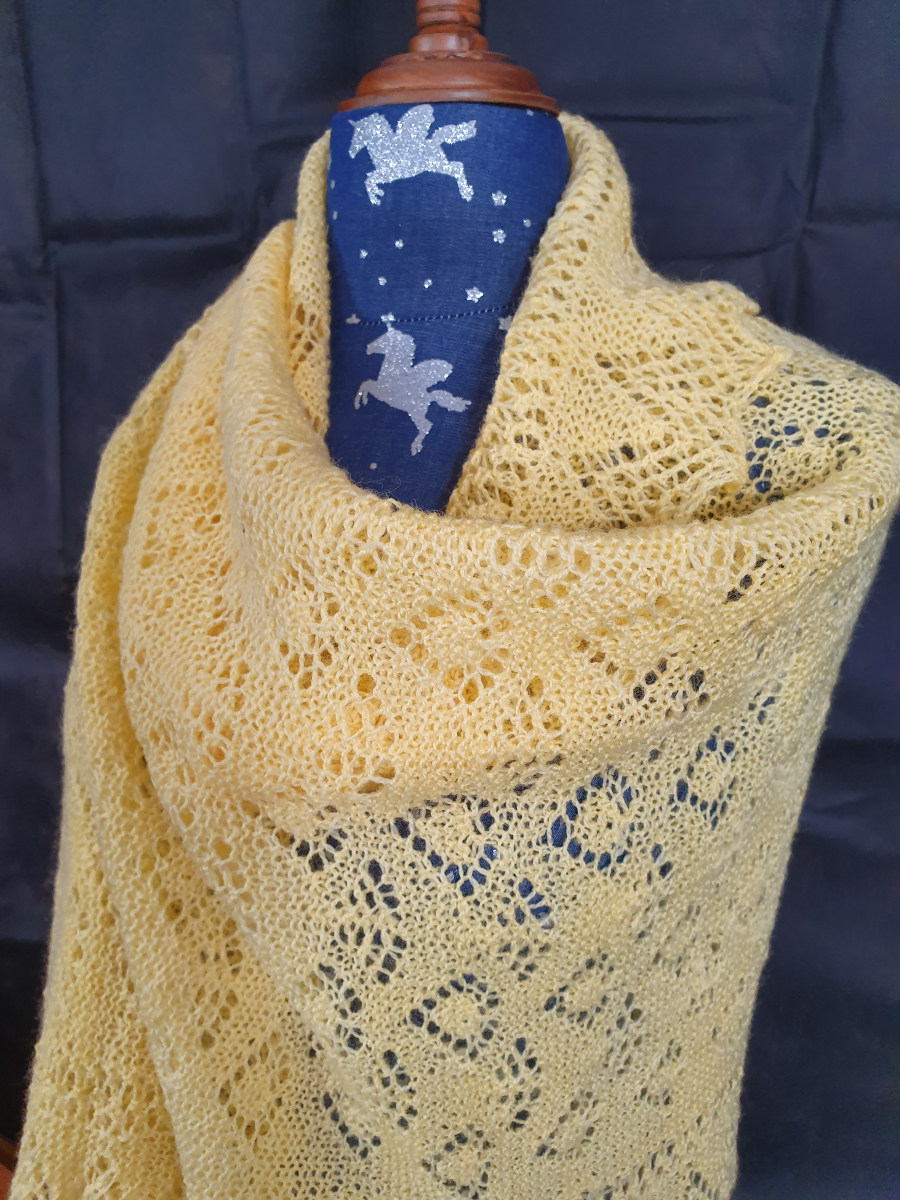Amanda
I am knitting my first afghan by knitting a bunch of smaller squares. I don't have a predetermined size for the finished product - just a general idea of how many knitted squares I will need to get to a general size I will be happy with.
My question has to do with blocking. Should I block all the pieces separately before sewing them together, or get it all together and then block it?
I'm leaning towards blocking after it's all together, but the size of the finished product makes this task seem daunting. Getting a big blanket wet, squeezing out the water, laying it straight and letting it dry would be a time and space consuming project!
I've knitted a few scarves before, but never blocked any of my work, so any thoughts or suggestions would be helpful. I've attached a photo of two of my squares. Two colors, although both are the same type/weight and knitted in the same design. I've laid the squares on an 8 1/2 x 11 sheet of paper to give you a sense of the size - each square is approx 5 1/2 x 5 1/2
Thank you in advance!
YOUR ANSWER
Why do you want to block your blanket? I have made quite a few in the past and have found that with larger blankets, just sewing them together keeps all of the blocks square and the weight of the wool usually helps to prevent the blanket from loosing it's shape.
I do block fine baby shawls but not blankets. Usually to get the shawl into the right shape (particularly for circular shawls) and to shape the edging.
With a blanket that is made up of squares I would probably wait until it was sewn together before blocking.
You will need a fairly large space, depending on the finished size of the blanket you could stretch or lay it out on a large bed or on a carpet on the floor. That way you can use rust proof pins to pull the blanket into the correct shape.
As for managing a large wet blanket, even if you wash your blanket by hand you can remove the excess water from your blanket by using the spin cycle of your washing machine. Just the spin though.
It will remove the excess water without damaging the blanket and you can then lay it out for blocking.
Comments for Amanda
|
||
|
||
Couldn't Find What You Were Looking for?
Try searching the site using the search box below:


Recent Articles
-
Shetland Knitting and Shetland Knitters
Feb 07, 21 07:44 AM
Shetland knitting and the women in the Shetland Isle who create Shetland lace are among the best knitters in the world. -
Fixing Knitting Mistakes
Jan 28, 21 02:35 AM
When you are learning how to knit, you are going to make a few mistakes. It might not make you happy but fixing knitting mistakes is par for the course. -
Shetland Lace Knitting
Dec 11, 19 07:03 PM
Shetland Lace Knitting is a particular style of knitting that developed in the Shetland Islands and was one of the main exports of the Island early in the last century.





